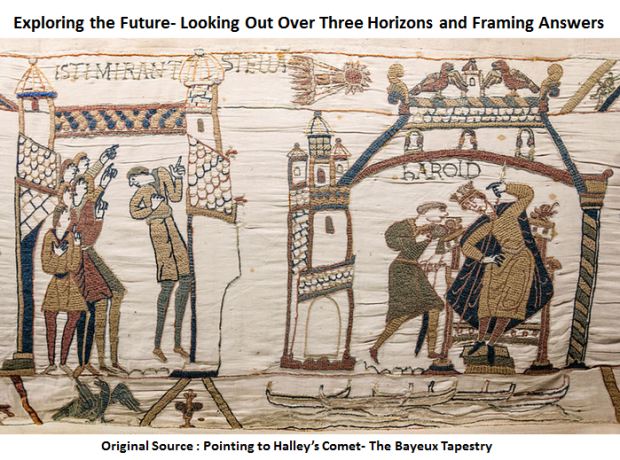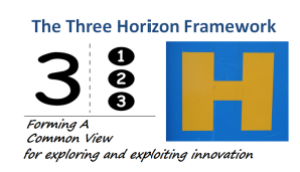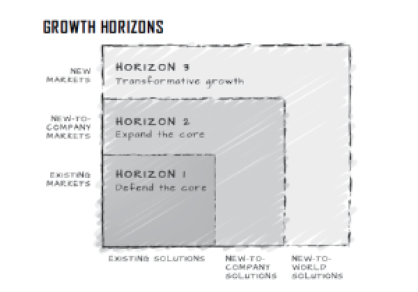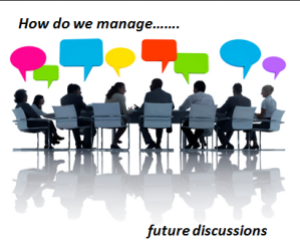
Backcasting is a planning method that starts with defining a desirable future and then works backwards to identify policies and programs that will connect that specified “future to the present”. The fundamentals of the method were outlined by John. B. Robinson from the University of Waterloo in 1990. The fundamental question of backcasting asks: “if we want to attain a certain goal, what actions must be taken to get there?”
While forecasting involves predicting the future based on current trend analysis, backcasting approaches the challenge of discussing the future from the opposite direction; it is “a method in which the future desired conditions are envisioned, and steps are then defined to attain those conditions, rather than taking steps that are merely a continuation of present methods extrapolated into the future”
I have collected different views on “Backcasting”.
Those are from assorted references like Wikipedia, from past work on water and energy systems, from Natural Step, from Innosight, discussed and promoted in Mark Johnson’s book “Lead for the Future” and a really recent one from Roxi Nicolussi and her Backcasting; Creating a Strategic Roadmap for the Future” or finally here, this one “All Roads Lead From The Future Back — A Vision and Spoke Model” by Aidan McCullen. I am looking to further explore the applications applied in water, energy and climate work.
So exploring backcasting as a method
Continue reading “The art of "Back Casting" needs care”
Tag: three horizon approach
Sharply accelerating clean energy innovation
 Today the International Energy Agency (IRA) released a long-awaited update on where innovation needs to be in the energy transition we are undergoing.
Today the International Energy Agency (IRA) released a long-awaited update on where innovation needs to be in the energy transition we are undergoing.
At their own admission, it has been three years since they (IEA) released its last Energy Technology Perspective (ETP) report. Although they argue they have been reflecting on the critical technology challenges, it is way overdue.
In this new report, “Energy Technology perspective: Special Report on Clean Energy Innovation” released today, 2nd July 2020, they have developed some improved modeling tools to bring a higher capacity to answer key technology questions in greater detail. This is good news.
IEA will further follow up later this year with a flagship ETP 2020 publication later in the year to keep a tighter and more consistent focus on the role and need of innovation to accelerate clean energy transitions.
They, the IEA are planning an IEA Clean Energy Transitions Summit really soon to convene ministers and CEO’s to the aim of driving economic development by this more robust focus on clean, resilient, and inclusive energy systems. Continue reading “Sharply accelerating clean energy innovation”
The Innovation Intensity needed in the Energy Transition
The level of innovation intensity within the Energy Transition is a fascinating one and one I continually place more and more a focus upon.
One really critical source of reference for tracking clean energy progress comes from the International Energy Agency (IEA). The recent reporting back on the development of the energy transition we are undertaking seems depressing reading. We need to accelerate innovation and technology adoption.
We are so off track for much of the Energy Transition. if we are going to get anywhere near the Paris Agreement, and the below 2-degree climate goal set by 2050, we need to focus even more on transforming our energy systems globally.
The IEA’s Sustainable Development Scenario (SDS) offers a pathway for the global energy system to reach three strategic goals: the Paris Agreement’s well below 2°C climate goal, universal energy access, and substantially reducing air pollution. The IEA assesses the status of 46 critical energy technologies and sectors and offers some general advice on how to get “on track” with this SDS approach.
Presently there is a rising concern the Covid-19 has knocked us off a path.
In the short term, the dramatic economic downturn has given rise to seeing air pollution levels drop during the “lockdown” months, but as was seen after the 2008 /9 financial crisis when the economy came “roaring back,” so did the carbon emissions.
Continue reading “The Innovation Intensity needed in the Energy Transition”
Why I like the idea of Energy Fitness Landscapes
 I have been building out the value in my proposal of having a Fitness Landscape framework within the Energy Transition and why it makes sense.
I have been building out the value in my proposal of having a Fitness Landscape framework within the Energy Transition and why it makes sense.
Here in this post, I want to expand on my thinking around navigating a complex landscape that the Energy Transition demands.
I am looking at the Energy Transition from an evolving technology innovation perspective. In other words, what “forces” can be identified or promoted that can transform the existing energy system through the pursuit of the new invention, innovation, or technological advancement. Specifically, ones that will be needed over such an extended time and complexity of change that this Energy Transition will take, upwards of twenty to thirty years to give it an unstoppable momentum.
For this, we need to continually identify resources and capital by addressing the competencies, capabilities, and capacities to generate and accelerate change and consistently map these back to the realities of the landscape of change we are trying to traverse.
When you look through the lens of innovating at the Energy Transition, you are often questioning the fitness, or the reality to achieve something. Continue reading “Why I like the idea of Energy Fitness Landscapes”
Exploring the Energy Transition Fitness Landscapes – opening thoughts on Hydrogen
 I am have been struggling with the Hydrogen Story. It is tough to relate to something where the realization may take 40 years to move from ambition to achievement. I get it that delivering Hydrogen is the vital piece of the decarbonizing of the world by 2050, yet it does seem a long, hard road to travel.
I am have been struggling with the Hydrogen Story. It is tough to relate to something where the realization may take 40 years to move from ambition to achievement. I get it that delivering Hydrogen is the vital piece of the decarbonizing of the world by 2050, yet it does seem a long, hard road to travel.
Hydrogen is undoubtedly becoming the big agenda ticket within any Energy Transition. It is the promise of being a central pillar for many parts of the world to achieve their targets of zero carbon by mid-century.
Hydrogen seems to holds, it seems, such a promise, but it is nearly all to do. There is so much to validate, prove, and certainly scale. We have some exciting pilots, even some full commercial-scale projects. Still, these are not connected up as we do not yet have a Hydrogen infrastructure, market, or overarching policies to build into a movement that shifts the energy needle. Lots of desire and willingness, but we do need to really make “hydrogen happen.”
I needed to step back and reframe my thinking on Hydrogen and also to help me understand the bigger “beast” of the Energy Transition. There was so much “hype” and future promise I was not getting a real sense of order.
So I sort of came to a screeching halt on researching further. I needed to get back into my ‘comfort’ zone of evaluating all the hype. So I wanted to go back to a comfortable place to ground my thinking. I have been wondering, have we the right focus to this? Are we often missing the real context of the need for the energy transition? Are we building the capabilities, competencies, and capacity to scale Hydrogen? In my view, we lack a specific focus. Opinions are varied, diverse, and in many cases, merely opportunistic. We need to a different level of strategic fitness
Applying Fitness Landscapes to the Energy Transition. Here in this post, I want to briefly introduce some thinking around navigating a complex landscape that the Energy Transition demands. I have taken Hydrogen as my opening exploration to traverse this landscape. Continue reading “Exploring the Energy Transition Fitness Landscapes – opening thoughts on Hydrogen”
Seeing the Energy Transition in Different Horizons and Innovative Ways
The majority of my recent work has been in investigating and building a comprehensive understanding of the #energytransition.
It is, to say at the very least, complex and challenging, but for me, satisfying and rewarding. Let me briefly explain how I am going about this and why. Why am I seeing the energy transition in different horizons and innovative ways?
My research ‘intensity’ (If I can call it that) had to become well structured, and I turned to some of my favorite, perhaps old fashion tools to capture my learning and give me my points of reference.
Included in this structured approach is different tools to capture and translate my progress. I have been building out extensive energy mind maps, constructing a dedicated posting site set up under “innovating4energy- a transition in all our lives” to ‘reflect’ some of my learnings and then to test that translation of my thinking, hopefully for others to relate too. Then building up the content within Microsoft’s One Note. Finally, lots and lots of saved files in an extensive folder on “the energy transition”.
The Energy Transition and building the new Smarter Infrastructure and Systems is a fascinating area within my present focus and future work. Here is why and how I am going about it:
Continue reading “Seeing the Energy Transition in Different Horizons and Innovative Ways”
Exploring the Rich Tapestry within the Three Horizon Framework
 Within our ‘business as usual’ attitudes, there actually lies the seeds of destruction. Today there is a relentless pace; we are facing stagnation in many maturing markets if we don’t evolve.
Within our ‘business as usual’ attitudes, there actually lies the seeds of destruction. Today there is a relentless pace; we are facing stagnation in many maturing markets if we don’t evolve.
Yet we actually subvert the future to prolong the life of the existing. We need to frame our innovation needs differently for exploring and exploiting innovation across different time horizons to move beyond the usual.
Commonality within innovation is becoming increasingly important. We need to build clear common languages of innovation, frameworks, methods and approaches.
There is a pressing need to frame innovation in different ways, to meet change that lies in the future. We are in need to clarify our options and this requires multiple thinking horizons to work through to deliver a richer tapestry of innovation discovery.
Continue reading “Exploring the Rich Tapestry within the Three Horizon Framework”
Applying innovation thinking in different horizons
 In the past few days, I have had some exchanges on twitter with Jairo H Venegas and Ralph-Christian Ohr on different thinking around the three horizon methodology. We share similar views on its value and partly how it can be applied.
In the past few days, I have had some exchanges on twitter with Jairo H Venegas and Ralph-Christian Ohr on different thinking around the three horizon methodology. We share similar views on its value and partly how it can be applied.
Ralph and I exchange constantly and occasionally meet up together. Actually, we need another meeting Ralph to catch up and explore these mutual innovation value points.
Ralph in a reply to Jairo suggested this: “That’s why a portfolio approach is so important” – with his take here: bit.ly/1Rn5Svq under his excellent Model for Integrative Innovation article.He ‘talks’ of cornerstones and offers different premises to anchor these a little more. Continue reading “Applying innovation thinking in different horizons”
Drawing out the different voices within the three horizon methodology for Innovation
 We so often struggle to articulate our innovation activity and then can’t seemingly project our plans into the future in consistent and coherent ways. We often lack the framing necessary.
We so often struggle to articulate our innovation activity and then can’t seemingly project our plans into the future in consistent and coherent ways. We often lack the framing necessary.
If this rings true of the innovation activity in your organization, then it is in danger of being seen as isolated, one-off events, that fail to link to your organizational strategy. Furthermore you’ll be missing out, or not capitalizing on emerging trends and insights where fresh growth opportunities reside.
I so often come back to the messages we need to learn, which centers around the three horizon methodology.
I just wish this framework would be adopted far more within organizations. wanting to build a sustaining dialogue around innovation, it can be such a powerful enabler.
Continue reading “Drawing out the different voices within the three horizon methodology for Innovation”
Are you engaging with all the different voices around you?

Having different perspectives and voices will enhance your innovation activities, they provide diversity, stimulus and greater options for you to consider the future innovation journey.
How do we set about engaging with all these different voices surrounding innovation?
Have you ever worked with the three horizon framework?
It is really useful for managing your innovation activities, drawing out the often conflicting voices within the organization on how to take innovation forward. The approach can unlock you from just being caught in the present, to one of envisaging a future that then allows you to begin to build different capabilities, competencies and capacities.
Find out more here and here and here on the three horizons or within this blog site put “three horizon approach ” into the search box. You will find I have provided a considerable overview in different posts’ thoughts on the 3H thinking and why I place such value in it for innovation’s evolution.
Continue reading “Are you engaging with all the different voices around you?”

